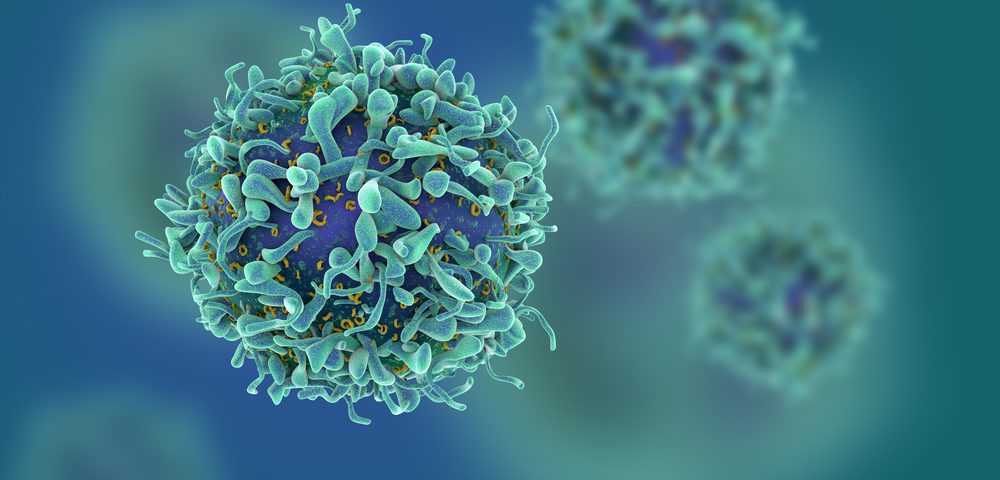Genetically modified T-cells may be key to preventing high-risk acute myeloid leukemia (AML) patients from relapsing after a bone marrow transplant, improving their chances of survival.
The findings came from a small trial of 12 AML patients who received an experimental T-cell therapy one month after getting a blood stem cell transplant. Strikingly, all patients were still in remission after a median follow-up of more than two years, which markedly surpasses the outcomes seen in patients receiving bone marrow transplant alone.
The study, “EBV-Specific Donor Cells Transduced to Express a High-Affinity WT1 TCR Can Prevent Recurrence in Post-HCT Patients with High-Risk AML,” was recently presented by Aude Chapuis, MD, of the Fred Hutchinson Cancer Research Center, at the 2016 annual meeting of the American Society of Hematology in San Diego, Calif.
For patients with high-risk AML, relapsing after bone marrow transplant often signals a low chance of survival. So, researchers need to come up with ways to prevent these patients from relapsing.
Now researchers have found that giving engineered T-cells to patients whose disease is in remission following bone marrow transplant “might actually be helping patients who have a high risk of relapsing to not relapse down the line,” Chapuis, cancer physician and immunotherapy researcher, said in a press release.
The experimental T-cell therapy used in this trial consisted of isolating certain T-cells from each patient’s donor, and genetically engineering them to recognize the WT1 protein. WT1 usually appears during development in the womb, but it then disappears from the body after birth. However, researchers have found that this protein is highly expressed in cancer; in leukemia, WT1 levels are 10 to 1,000-fold higher than in healthy cells, which makes it a promising target for directed cancer therapies.
The 12 patients enrolled in the trial first received a bone marrow transplant. Then the team examined the marrow of the 12 patients to look for signs of cancer cells. As they found no trace of the cancers — meaning that the patient was in remission — the patients received up to 10 billion of the genetically engineered T-cells one month after the transplant.
Importantly, the researchers showed that 27 months, on average, after patients’ transplants, none of them had relapsed. In addition, after all that time, the researchers were still finding genetically engineered T-cells in the patient’s circulation.
Such results markedly contrasted with that seen in a group of similar patients who received transplants around the same time, but who did not receive the engineered T-cells. Although all patients in this group achieved remission after the bone marrow transplant, more than a quarter relapsed within 10 months.
Researchers now are hopeful that the engineered immune cells continue to survive and can clear the cancer cells that eventually may develop. Nonetheless, given the small size of the trial, new studies are required to further validate the results, and to see if the therapy provides similar benefits in lower-risk AML patients receiving bone marrow transplants.


